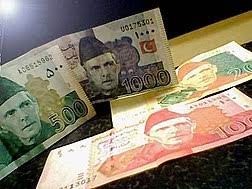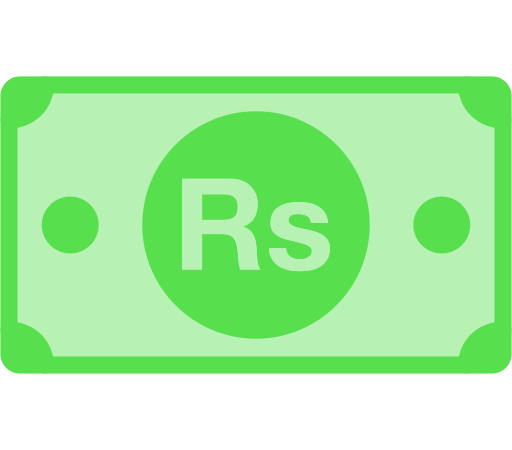History of currency in Pakistan:
The history of money in Pakistan is closely linked to economic and political developments, especially during the British rule and after independence in 1947. Below is a brief overview of the events Major history related to currency in Pakistan:
Before independence: British Colonial Rule: Before independence, the region now known as Pakistan was under British colonial rule and the Indian rupee (INR) was the official currency. The British introduced a standardized monetary system in the 19th century.
Decimalization and unified currency: In 1957, the Indian rupee was decimalized and a new series of coins and notes were introduced to standardize the monetary system.
After gaining independence:
Creation of Pakistan (1947): After the partition of British India in 1947, Pakistan became an independent country. Initially, India and Pakistan continued to use the Indian rupee.
Introducing the Pakistani Rupee (PKR):
In 1948, Pakistan introduced its own currency, the Pakistani rupee (PKR), to establish monetary independence from India. The Pakistani rupee was pegged to the British pound until 1982, after which it adopted a managed float against a basket of currencies.

Partition tickets (1947-1948):
Initially, Pakistan continued to use Indian banknotes with the word “Pakistan” printed on it. Over time, Pakistan started issuing its own banknotes and coins. State Bank of Pakistan (SBP):
The State Bank of Pakistan (SBP) was established on 1 July 1948 as the central bank responsible for regulating the country’s banking and monetary system, including issuance and management. Pakistani rupee management.
Decimalisation of the Pakistani rupee (1961):
Pakistan adopted a decimal currency system in 1961, replacing the old British system based on pounds, shillings and pence.
Change name and design:
Over the years, Pakistan has made several changes in the design and denomination of its banknotes and coins to meet the changing economic and social needs of the country.
Floating exchange rate (1982):
In 1982, Pakistan switched from a fixed exchange rate system to a managed floating system, allowing the Pakistani rupee to fluctuate based on market forces.
Modern banking and digital money:
Pakistan has adopted a modern banking system and digital currency, with the introduction of online banking, ATMs and electronic money transfers. Today, the Pakistani rupee remains the official currency of Pakistan and the State Bank of Pakistan plays an important role in regulating monetary policies and monetary operations in the country. Currency is measured in coins and banknotes, each with its own value and design.

Pakistan Rupee Slumps to Record Low on Growing Headwinds:
The Pakistani Rupee (PKR) has been facing a period of devaluation and is at record lows against major currencies due to various economic, geopolitical and external factors. Here are some common reasons that contribute to the devaluation of the Pakistani rupee:
Trade deficit and current account imbalance:
Persistent trade deficits, when a country imports more goods and services than it exports, create pressure on foreign exchange reserves. Pakistan’s trade deficit and current account imbalance could lead to higher demand for foreign currency, which would put pressure on the value of the rupee.
Inflation and purchasing power:
High inflation rates erode the purchasing power of the rupee, making it less valuable compared to other currencies. Inflation erodes the value of money and can cause exchange rates to depreciate.

Foreign debt and foreign exchange reserves:
High levels of foreign debt and limited foreign exchange reserves could reduce investor confidence in the economy. Concerns about Pakistan’s ability to repay debt and maintain adequate reserves could cause the value of the rupee to fall.
Political and economic instability:
Political instability and economic uncertainty can weaken investor confidence and negatively impact foreign direct investment (FDI) and portfolio investments. The perceived instability could lead to capital flight, putting pressure on the rupee.
Monetary policy and interest rates:
Changes in monetary policy, especially interest rate adjustments, can impact the value of the rupee. Higher interest rates can attract foreign investment, thereby boosting demand for the local currency and supporting its value.
Global economic conditions:
Changes in global economic conditions, such as changes in interest rates by major central banks (e.g., the US Federal Reserve), affect demand for market currencies. emerging market like the rupee. Rising interest rates in major economies could divert capital out of emerging markets, including Pakistan.
Oil prices and trading partners:
Pakistan is an oil importing country. Therefore, fluctuations in world oil prices affect the country’s import turnover and trade balance. Rising oil prices increase import costs and thus increase demand for foreign exchange.
Speculative activities and market psychology:
Speculative trading and market sentiment can cause short-term fluctuations in the value of the rupee. Quick buying or selling of rupees based on speculation can lead to short-term fluctuations and devaluation.

Economic structure issues:
Persistent structural problems in the economy, such as lack of diversification, inadequate infrastructure and unbalanced tax system, could negatively impact economic growth and the value of the rupee .
Addressing these challenges requires a comprehensive approach that includes fiscal and monetary policies, trade and investment reforms, efforts to enhance export competitiveness, and economic diversification. economy and prudent management of debt and foreign reserves.
Furthermore, promoting political stability and improving the investment climate are key to restoring confidence and stabilizing the rupee.




